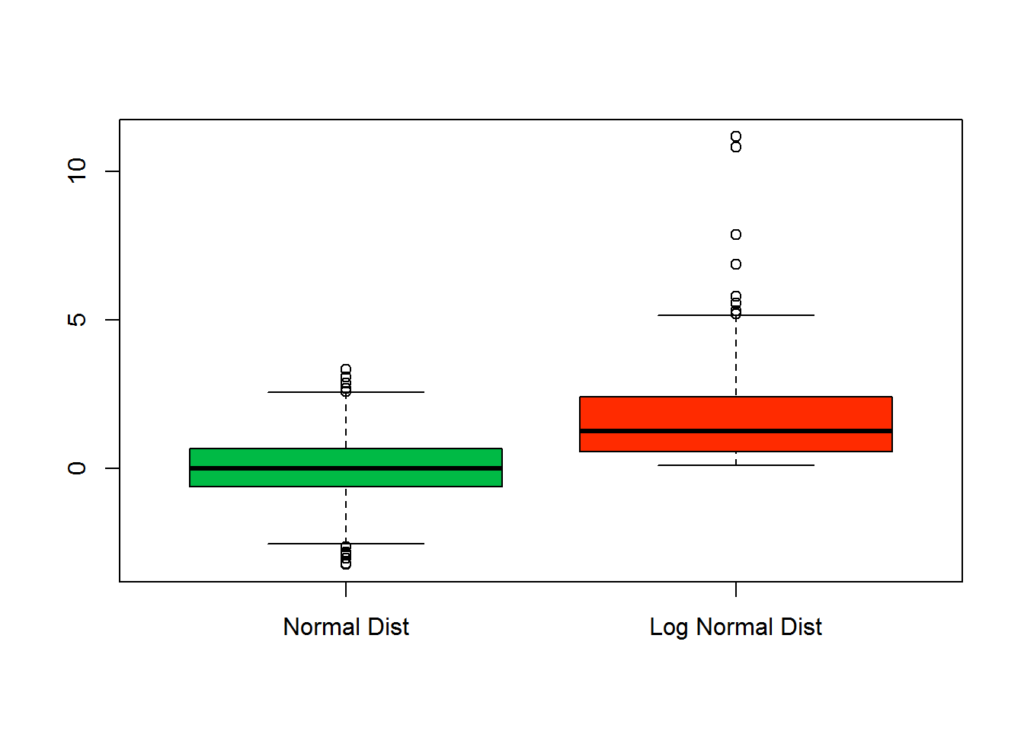
- #INTERPRETING A BOX AND WHISKER PLOT HOW TO#
- #INTERPRETING A BOX AND WHISKER PLOT SOFTWARE#
- #INTERPRETING A BOX AND WHISKER PLOT PLUS#
Skew refers to the asymmetry of your data.

Second, given the much longer “whiskers” for men, we can interpret that they vary more widely in the amount of money that they spend on the date while women tend to center more toward the average except on Saturday night. It is easy to see that males and females typically spend on average different amounts on the total bill for date night except on Saturday. Boxplots make comparing the measures of data much more efficient.
#INTERPRETING A BOX AND WHISKER PLOT HOW TO#
Now that we have discussed how to read the boxplot, let talk about how to interpret it like really good stats students! Let’s take a look at something more interesting than trees… date night! We are going to look at how much of the total bill men and women pay on a given date on common date nights.įirst, notice that there are two sets of boxplots: one for males and one for females. If we were conducting some sort of study, we could say that this tree is statistically different from the other trees by assigning it a z-score. This means that this particular data point is unusual and does not fit the data set for some reason. Now we come to that little open dot at the very furthest right. These lines were formerly called the whiskers of the plot, but statisticians have since reduced the name to the much less adorable boxplot. These lines give you an idea of the range of the data. So our tallest normal tree is a whopping 110 inches. The line at the furthest right represents the highest value in the data. In the case of our trees, the smallest is about 30 inches tall.

The line at the furthest left represents the lowest value in the data. We’ll talk about how really useful this box is in just a minute. It represents 50% of data points between the 1st and 3rd quartiles. Hence the reason I supplemented the data. Just so you know, in a typical data set without supplemented data, you may not see that little dot because it should be close to the median value. Remember from long, long ago in a post far, far away that the mean is actually a statistical model that represents the data. The mean value of the data may not always be an actual value in the data. The dot beside the line, but still inside the yellow box represents the mean value of the data. On the graph, the vertical line inside the yellow box represents the median value of the data set. The Basics of the Boxplotįirst, let’s look at a boxplot using some data on dogwood trees that I found and supplemented. It also shows a few other pieces of data. Recall that the measures of central tendency include the mean, median, and mode of the data. One wicked awesome thing about box plots is that they contain every measure of central tendency in a neat little package. By John Clark on Januin Descriptive Statisticsīox plots, or box-and-whisker plots, are fantastic little graphs that give you a lot of statistical information in a cute little square. See also the Box and whisker plot (text).Ĭopyright © 2000-2021 StatsDirect Limited, all rights reserved.
#INTERPRETING A BOX AND WHISKER PLOT PLUS#
For the parametric plots, the fence values are defined as the mean plus and minus 2 standard deviations. For the nonparametric plot, the fence values are defined as lower and upper quartiles minus and plus 1.5 times the interquartile range respectively. If you check the fence option then gate values will be calculated automatically for each variable plotted. This form of box and whisker plot is often used to represent outliers.

If you specify lower and upper gate values that lie between the limits of the box and within the range of the data then whiskers will be drawn as straight lines at the gate values and any data points outside those boundaries will be plotted as circles.

This is a useful way to present data to an audience it is often easier to convey the central location and spread of values pictorially than by quoting a list of descriptive statistics. See descriptive statistics for the formulae used. StatsDirect enables you to choose one of these two parametric schemes or the nonparametric scheme for each plot. This convention can also be extended to parametric representation of data using the arithmetic mean bounded by one standard deviation or by its confidence interval. The upper hinge is the 3(n+1)/4th value whereas the upper quartile is the (3n+1)/4th value.
#INTERPRETING A BOX AND WHISKER PLOT SOFTWARE#
Note that some software plots the upper and lower hinge and not the upper and lower quartile in box and whisker plots. In nonparametric terms, the central "box" represents the distance between the first and third quartiles with the median between them marked with a diamond, with the minimum as the origin of the leading "whisker" and with the maximum as the limit of the trailing "whisker". Box and Whisker plots, described by Tukey (1977), give a pictorial representation of nonparametric descriptive statistics.


 0 kommentar(er)
0 kommentar(er)
